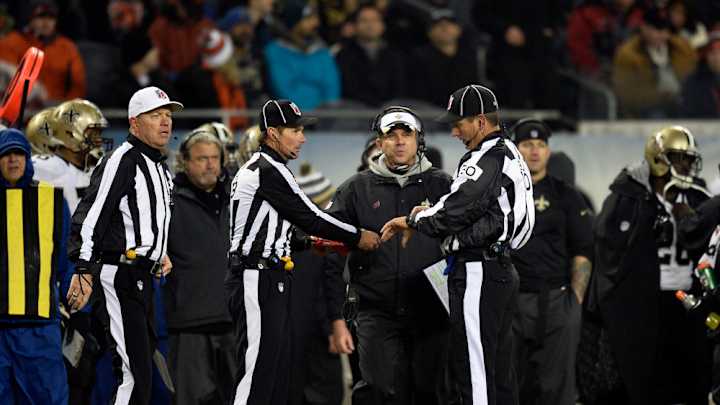NFL considering proposal to allow injury spotters to stop play

The NFL is considering a rule proposal that would allow independent injury spotters to stop play in the event a player appeared in need of medical examination.
Rich McKay, the NFL's competition committee chairman and Atlanta Falcons CEO and president, told reporters that the proposal would allow a spotter to communicate with on-field officials and ask for a stoppage of play.
• NFL teams approve suspension of local blackout policy for 2015
The NFL's injury spotters are hired jointly by the league and the players union, but are not currently able to halt play.
Among numerous other plays over recent years, the helmet-to-helmet hit New England Patriots wide receiver Julian Edelmansustained in Super Bowl XLIX last month prompted increased chatter about the NFL's injury-spotting policies. Edelman was hit in the fourth quarter and appeared disoriented, but was allowed to remain in the game. He later said he was tested for a concussion and cleared to return.
• Darren Sharper accepts sexual assault plea deal, will serve jail time
Injury spotters reportedly called via radio to the sideline twice after the play, asking for Edelman to be checked for a concussion.
The NFL implemented new protocols for concussion testing prior to last season and said before the Super Bowl the number of brain injuries was down 25 percent during the regular season, to an average of 0.43 incidents per game.
Last August, The MMQB's Jenny Vrentas profiled Tom Godar, a certified athletic trainer who has worked as an injury spotter during St. Louis Rams games at the Edward Jones Dome.
Two and a half hours before kickoff, two technicians and an NFL IT specialist begin setting up a command center in the private booth underneath the press box. The eye in the sky is more than just a pair of eyes. Godar can watch the game three ways: live through the binoculars; on the TV broadcast, which is on a two-second delay; or through the NFL Injury Video Review System, which uses an in-house feed on a six-second delay and records to the computer just like a DVR.
To Godar’s left sits Mike Eaves, an injury video technician. Eaves is a Division 2 on-field official who first worked with the Rams in 2008, when he was tasked with guarding the box containing the back-up radio helmet for the defensive signal-caller. Now he sits in booth No. 7, using, of all things, an X-Box controller to rewind, fast-forward and pause the in-house feed on a computer screen angled perpendicular to the field.
Godar looks for all injuries, but he particularly keeps an eye out for contact to the head that the medical staff on the field might miss from their vantage points. Making a counterclockwise winding motion with his right index finger, Godar prompts Eaves to rewind and replay virtually every running play. Spotting the point of contact between the running back and the tackler in real time, he explains, is nearly impossible. Sacks, chop blocks, an illegal block in the back, a tumbling catch and any play in which a receiver is thrown to the ground also warrant a second look (and sometimes a third or fourth). He’s looking for a clear answer to a simple question: Did the player’s head and/or neck area collide dangerously with another player, or with the turf?
- Mike Fiammetta
